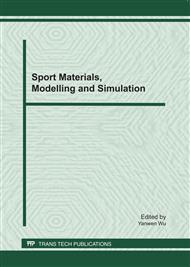p.452
p.458
p.464
p.469
p.475
p.480
p.483
p.487
p.492
An Effective Aggregation Method in Distributed Virtual Environments
Abstract:
The aggregation problem of the interest expressions is an important problem in distributed virtual environment (DVE). According to the characteristic of DVE system, a new aggregation method is proposed in this paper, which uses hierarchical bounding volume to aggregate threshold predicate and TAG-ID/MASK to aggregate equivalent predicate separately. Experimental results show that this method can effectively reduce storage of interest expressions and highly improve the system’s scalability.
Info:
Periodical:
Pages:
475-479
Citation:
Online since:
February 2011
Authors:
Price:
Сopyright:
© 2011 Trans Tech Publications Ltd. All Rights Reserved
Share:
Citation:


